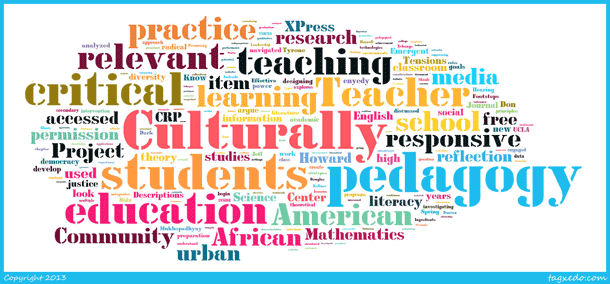What is culturally relevant curriculum?
Curriculum is simply what is taught in the classroom and what information is addressed in a teacher’s lesson plan. Curricula that are culturally responsive reflect a wide variety of narratives from different cultures and historical perspectives.3 Traditionally, these are histories and  cultures that have been excluded from public education in the United States, such as the history of Native Americans, African-Americans, the LGBT community and non-Western cultures.4 Schools can integrate culturally relevant curriculum across subjects and age levels. The movement towards culturally relevant curricula is happening at the micro and macro levels. At the individual level, teachers can incorporate diverse voices and perspectives, such as Sandra Cisneros, Langston Hughes, or Sherman Alexie. More broadly, districts such as Los Angeles Unified School District have mandated that students take an Ethnic Studies course, such as African-American History or Mexican-American Studies, in order to graduate.
cultures that have been excluded from public education in the United States, such as the history of Native Americans, African-Americans, the LGBT community and non-Western cultures.4 Schools can integrate culturally relevant curriculum across subjects and age levels. The movement towards culturally relevant curricula is happening at the micro and macro levels. At the individual level, teachers can incorporate diverse voices and perspectives, such as Sandra Cisneros, Langston Hughes, or Sherman Alexie. More broadly, districts such as Los Angeles Unified School District have mandated that students take an Ethnic Studies course, such as African-American History or Mexican-American Studies, in order to graduate.
Why does cultural relevance matter in the classroom?
Curriculum the recognizes student’s cultural competencies, such as speaking a different language or having a non-Western heritage, creates a more inclusive learning environment for non-White students.6 When teachers recognize student’s cultures in the classroom, they increase student’s self confidence, sense of belonging, and classroom engagement.6 Through implementing curriculum that reflects a wide array of cultures, narratives, and experiences, schools and teachers have the opportunity to engaged students who previously sat at the margins of the classrooms and foster an environment in which they feel important and included.